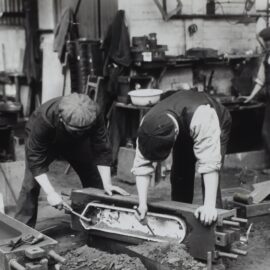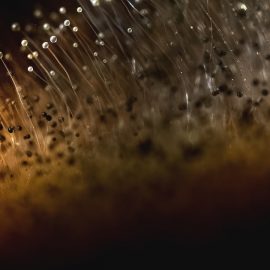

This article is an excerpt from the Shortform book guide to "Where Good Ideas Come From" by Steven Johnson. Shortform has the world's best summaries and analyses of books you should be reading.
Like this article? Sign up for a free trial here.
What is exaptation? How can it be applied in practical ways outside of biology?
Exaptation is the use of a tool or trait in a context that’s different from the one it was originally intended for. In Where Good Ideas Come From, best-selling author and theorist Steven Johnson provides a few examples of exaptation and shows how it can lead to novel ideas outside of biology.
Read more to learn about exaptations, particularly in the context of innovation.
Innovating Ideas Through Exaptations
What is exaptation? Exaptation is a term from evolutionary biology for when a trait that evolved for one purpose changes function and is used for another purpose. Johnson provides an exaptation example from biology: Feathers initially evolved to keep animals warm. But, when they began flying, feathers turned out to be a perfect tool to facilitate gliding through the air. In his book, Johnson describes how exaptations can lead to innovation.
(Shortform note: Some scientists question whether exaptation is actually distinct from adaptation, suggesting that if you trace any given evolutionary trait back far enough, you’ll find that it developed from the coopting of a structure for a function different from its original function. This would make the distinction between adaptation and exaptation arbitrary and irrelevant. Others note that it’s a term that’s not frequently used in scientific literature, possibly because of its unclear definition. They say, however, that it has become more frequently used in fields like the history of technology and innovation studies because of humans’ tendency to consciously apply one idea to different contexts.)
Exaptation plays a large role in media and art. Taking a narrative device like stream-of-consciousness writing and adapting it for film changes its function and creates a new innovation in cinematic storytelling.
(Shortform note: Some experts suggest that the development of art itself was a type of evolutionary exaptation of communication. They note that humans have an innate drive to use symbols to communicate with each other and that the neural networks that developed for this purpose exapted over time to allow us to create and appreciate art.)
Johnson explains that networks such as cities are hotbeds of exaptation because they help connect people with different ideas and cultures. When these differences collide, they lead to greater innovation and more creative ideas. Coffeehouses are an example of exaptation of a physical space in society because, while they were originally created as businesses to sell food and drink, they were quickly exapted into spaces where people could meet and share ideas on a larger and more diverse scale than is possible in the home or workplace.
(Shortform note: The convergence of different cultures is one of the most important benefits of exaptational hubs like cities and coffeehouses. However, some experts suggest that this mixing of cultures can lead to a quashing of good ideas when people clash over cultural differences. Studies show that people who view themselves as open-minded are more prone to this type of ideological shutdown. Participants in these hotbeds should take care not to be overly critical of others with different ideas to avoid the risk of shutting themselves off to these exaptations.)

———End of Preview———
Like what you just read? Read the rest of the world's best book summary and analysis of Steven Johnson's "Where Good Ideas Come From" at Shortform.
Here's what you'll find in our full Where Good Ideas Come From summary:
- How the world's best inventions grow from minor inklings
- How capitalism negatively impacts innovation
- Why making mistakes is essential to great innovations






